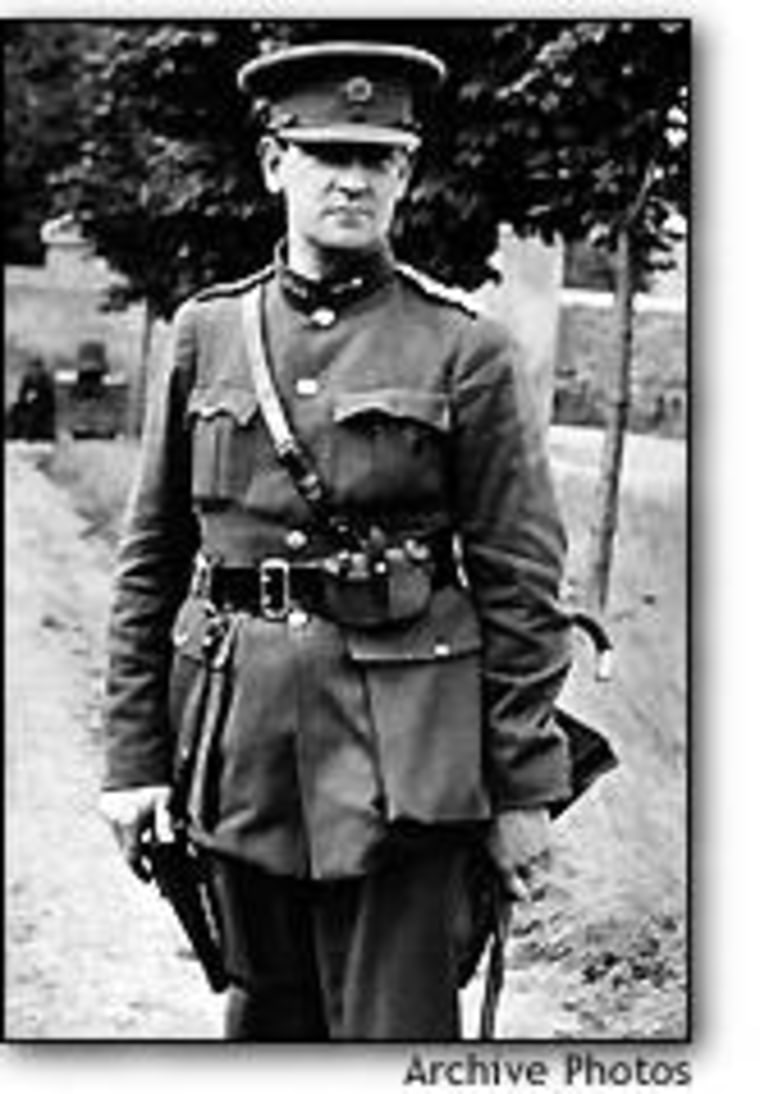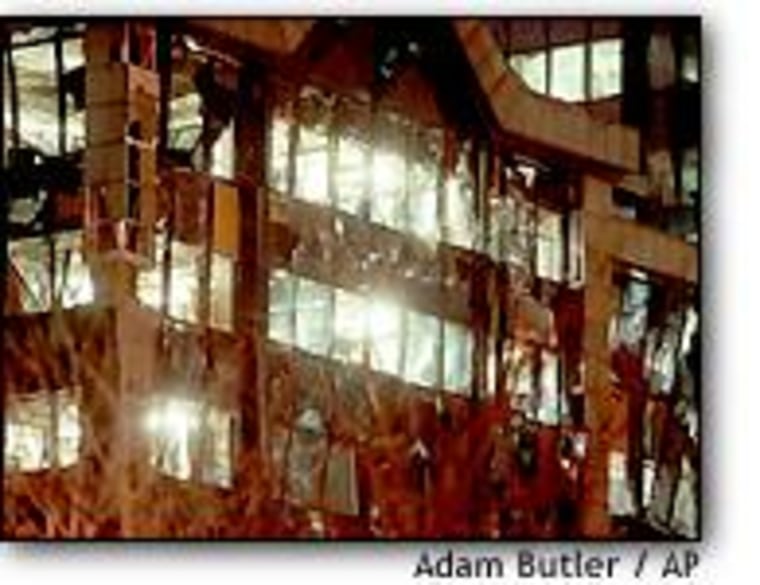Northern Ireland’s peace referendum may bring an end to over 30 years of vicious sectarian violence and make a start on ending hundreds of years of Anglo-Irish animosity. Certainly, it has given the people of this divided territory the best opportunity in modern times to buck their violent history and bring calm and prosperity to a region that can barely remember either. But any change, if it indeed comes, will be slow.
HANGING IN THE BALANCE of a “yes” or “no” vote on referendum day, May 22, are countless risks that could lead to the unraveling of the long-sought peace deal.
The peace plan is a delicately balanced document that gives the under-represented Catholic minority, often called the “nationalists,” an immediate role in governing the province and the possibility of forging a future reunion with the independent Irish Republic to the south. The Protestant majority, which doesn’t want to be a part of the Republic of Ireland, will be able to swear allegiance to Britain (thus the moniker “unionists.”) They know only a majority of Northern Ireland voters can change the province’s status, meaning that, for now at least, Northern Ireland’s 1.6 million residents can simply choose whether they want to be identified as British, Irish or both.
BLOODY FAILURE
The Anglo-Irish conflict has raged through hundreds of years of bloody history. From religious wars of the 17th century through uprisings in the 19th century to the partition of 1920, when the then IRA’s military leader Michael Collins agreed to allow the creation of a Belfast-based British province in exchange for the 32 counties that now make up the Irish Republic. All along, the Protestant establishment fought hard to exclude the indigenous Catholics from any say in governing the state.

The 20th century brought numerous tries at solving what are known as “the troubles” of Northern Ireland, and all ended in failure. Overwhelming fatigue from years of bloody conflict, and simple economics, ultimately brought opposing forces to the table to hammer out this agreement.
The IRA (represented by Sinn Fein, its political wing), the mainstream parties representing nationalists and unionists, the Irish Republic and the British all made concessions to bring about the accord.
To join the peace process, Sinn Fein convinced the IRA to cease military operations, while the British and, to some extent, the unionists, dropped a requirement that the IRA “decommission” the thousands of weapons and tons of explosives it holds.
PEACE FRAMEWORK
Some key factors in the so-called Good Friday peace agreement:
A proportionally elected Northern Ireland Assembly and a North-South Ministerial Council will be established to promote ties between the two territories. A British-Irish Council made up of representatives of both governments will also be established.
The Government of Ireland Act, in which London claims British jurisdiction over all of Ireland, will be repealed.
A referendum will be held to amend the Irish Constitution to remove Ireland’s claim on the North.
Enshrinement of the “majority principle,” in effect, the idea that only a majority of Northern Ireland voters can decide to change the status of the territory. It also holds that polls on the future status of Northern Ireland must be at least seven years apart.
Demographics, in fact, are a major factor in the thinking of both the nationalist community and the hard-line “no” contingent among the unionist majority. Experts differ, but most agree that within a few decades the higher Catholic birthrate in Northern Ireland will produce a Catholic (though not necessarily “nationalist”) majority. Sinn Fein, the IRA’s political wing, sees this as a clear route to the unification of all of Ireland. Anti-accord forces see it as dooming their union with Britain.
Geography is also a factor. Over the years of conflict, Protestants have migrated to the east of the territory and to England, leaving the Catholic minority in control of about 60 percent of the land. Protestants are also sending their children to school in England, which, ironically, has tipped the percentage of students at Belfast’s once segregated Queen’s University in the Catholics’ favor.
RISKS AHEAD

The agreement holds many inherent risks, which will remain regardless of the outcome of the poll:
There is no guarantee that the IRA’s cease-fire will be upheld. While Sinn Fein leader Gerry Adams has deftly negotiated with the group to stay on the sidelines, the IRA could renew military operations at any time, possibly causing an overall escalation of violence.
Protestant “loyalist” militant groups like the Ulster Volunteer Force, Tara, the Shankill Defenders Association, and the Ulster Protestant Volunteers, which for years worked unhindered by police, could also spark renewed violence.
Clandestine camps and schools run by the IRA and other paramilitary groups may continue to exist, preparing for a breakdown in the peace process. Even in the lead-up to the historic August 1994 IRA cease-fire, fresh weapons caches were discovered under the group’s control.
The Royal Ulster Constabulary, the Northern Ireland armed police that turned a blind eye to many Protestant attacks on Catholics, will have its numbers reduced by nearly two-thirds. The peace accord calls for many more Catholics to be hired, but, in any scenario, there will be fewer police on the streets.
PEACE DIVIDEND?
The British government spends nearly $6 billion each year subsidizing Northern Ireland, not including the nearly 20,000 troops it has stationed in the province.
The Northern Ireland conflict has killed more than 3,000 and injured nearly 40,000 in its 30 years. No one here expects the violence to stop overnight. Tens of thousands of houses were damaged since the beginning of the troubles.
Many residents are looking forward to the economic prosperity that peace could bring to the region:
Northern Ireland can expect almost immediate foreign investment, if the vote succeeds. Many politicians want to imitate Israel’s Jewish-American bond with a similar Irish-American-Northern Ireland relationship, drawing on the financial resources of the Irish-American community.
U.S. President Bill Clinton, who has searched his roots in Ireland, is a big supporter of peace. Clinton can be expected to push U.S. investment in the territory.
Plans to create special economic zones, like a proposed 100-mile business corridor running from Dublin to Belfast, are already in the works. Economists predict 75,000 jobs could be created (although many will lose jobs in the police and security sectors).
Northern Ireland’s tourism sector, which hasn’t seen growth since the 1960s, stands to profit from security and peace in the region, joining southern Ireland as a major tourist destination.
Because the violence resulting from a failed peace agreement could be worse than anything the peoples of Northern Ireland have seen to date, the architects of the peace plan are working hard to include all sides of the conflict equally. The hope is that by bringing paramilitary groups into the mainstream of political life, they will be forced to fire with words rather than weapons.
The momentum of the peace plan will be crucial to its success. The implementation of the terms of the deal — and an election campaign for the Northern Ireland Assembly — will mark the end of the peace honeymoon and the beginning of a new round of bickering. Ultimately, that will be true test of the peace agreement.
Preston Mendenhall is MSNBC’s international correspondent.